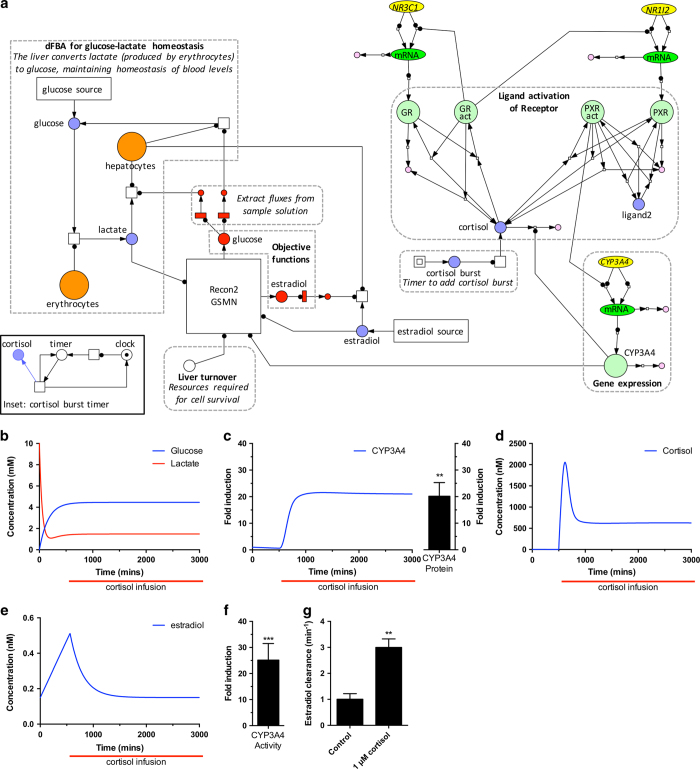Figure 4.
Multi-formalism simulation integrating cortisol signaling with the human Recon2 GSMN reveals a drug interaction with estradiol clearance. (a) The Petri Net diagram of network connectivity created in the Snoopy editor, with overlaid comments for clarity. Color and symbol size has been manually set to match SBGN molecule types and transition types specific to QSSPN. The PN connectivity to implement a timer for administering a network perturbation (cortisol burst), is contained within a coarse transition and shown as an insert. (b) Simulation of glucose and lactate dynamics in the blood physiological compartment, demonstrating a convergence to physiologically realistic steady states. Perturbation of the system through a simulated cortisol infusion starting after 500 min elicits a dynamic alteration in the signaling network, resulting in (c) a predicted increase in CYP34A protein levels, which is confirmed in primary human hepatocytes. The increased expression of CYP3A4 protein is predicted to increase flux through reactions catalyzed by this enzyme, leading to: (d) degradation of excess cortisol and establishment of new steady state; (e) a drug–drug interaction for a second CYP3A4 substrate (estradiol), contained within the GSMN, leading to a decrease in it’s steady-state level. The predicted increase in CYP3A4 activity following cortisol exposure is confirmed in primary human hepatocytes (f), as is the enhanced rate of estradiol clearance (g). FBA, Flux Balance Analysis; GSMN, Genome-Scale Metabolic Network; mRNA, messenger RNA; QSSPN, Quasi-Steady State Petri Net. **P<0.01, ***P<0.001.

